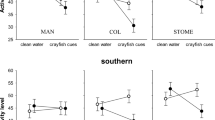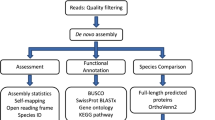Abstract
DESPITE the potential or actual importance of bloodsucking insects in the transmission of pathogenic micro-organisms, investigation of the life-histories of the European species of the Tabanidæ, including that of the cleg, the most common of our palæarctic species, has been comparatively neglected. Hitherto the number of larval stages has not been ascertained in any European tabanid species, and for the rest this has been determined only in one bivoltine North American species1 and in five trivoltine Indian species.2
This is a preview of subscription content, access via your institution
Access options
Subscribe to this journal
Receive 51 print issues and online access
$199.00 per year
only $3.90 per issue
Buy this article
- Purchase on SpringerLink
- Instant access to full article PDF
Prices may be subject to local taxes which are calculated during checkout
Similar content being viewed by others
References
Schwardt, H. H., Ann. Entom. Soc. Amer., 24, 409ä“416; 1931.
Isaac, P. V., Mem. Dept. Agr. India, Entom. Ser., 8, 53ä“62; 1924. Ibid., 8, 93ä“109; 1925. Ibid., 9, 21ä“28; 1925.
Cameron, A. E., Bull. Ent. Res., 17, 1ä“42; 1926.
Author information
Authors and Affiliations
Rights and permissions
About this article
Cite this article
CAMERON, A. The Rearing of Hæmatopota pluvialis, Linné (Cleg, Tabanidæ) under Controlled Experimental Conditions. Nature 130, 94–95 (1932). https://doi.org/10.1038/130094c0
Issue date:
DOI: https://doi.org/10.1038/130094c0



